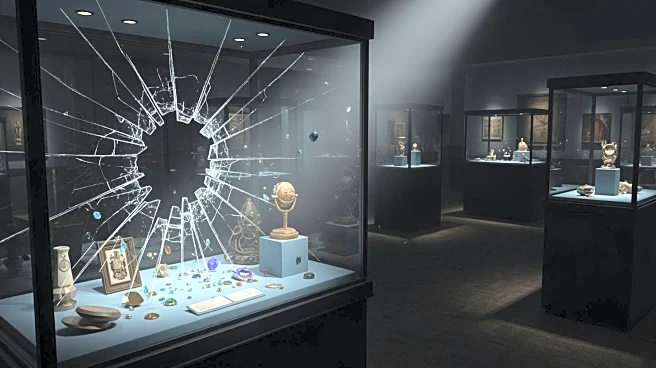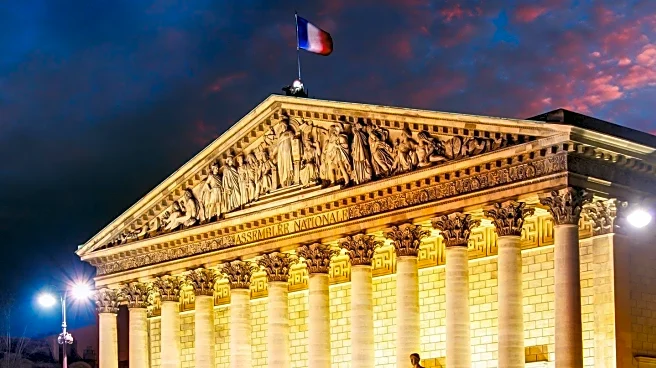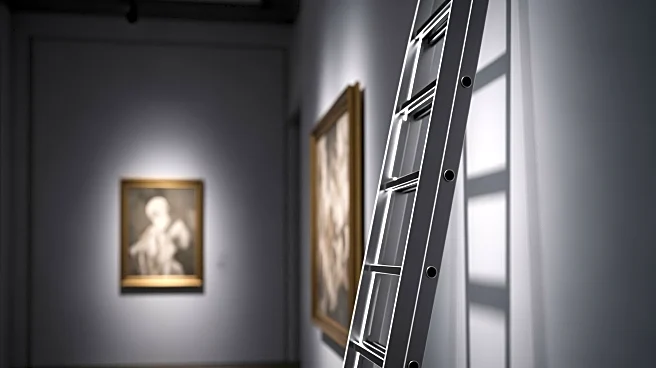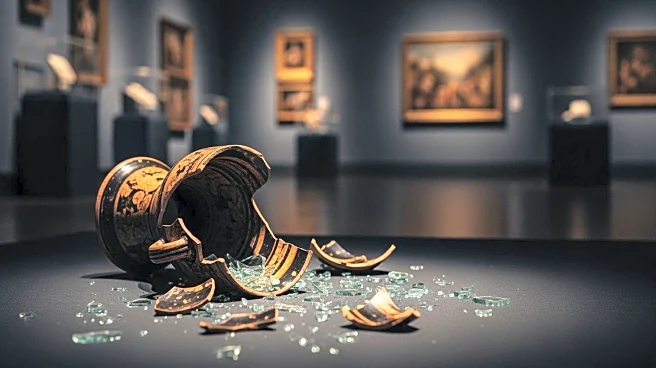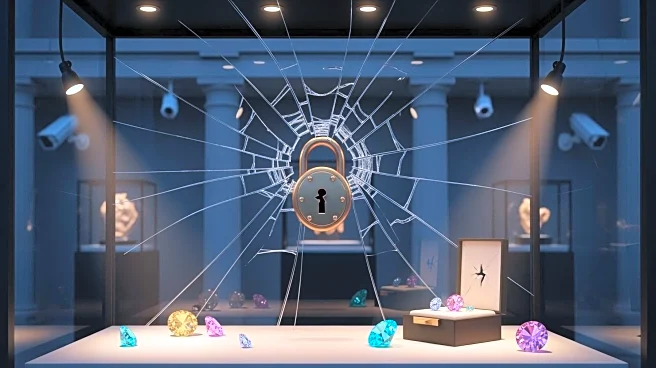What's Happening?
An attendant at the Louvre Museum has shared her experience during a recent heist where thieves stole eight crown jewels, including a necklace and diadem belonging to French royalty, valued at approximately
€88 million. The thieves used a mechanical ladder on a lorry to access a first-floor balcony and entered the Gallery of Apollo. The attendant described hearing a loud, metallic noise as the thieves used an angle grinder to break in. Despite the chaos, the staff managed to evacuate visitors and secure neighboring galleries. The thieves escaped, leaving behind a damaged crown and a trail of evidence.
Why It's Important?
This brazen theft highlights vulnerabilities in the security of cultural institutions, emphasizing the need for enhanced protective measures. The incident has sparked a debate on the adequacy of current security protocols in safeguarding national treasures. The theft not only represents a significant financial loss but also a cultural one, as the stolen items are irreplaceable pieces of history. The event underscores the challenges museums face in balancing public access with the protection of valuable artifacts.
What's Next?
The Louvre Museum is expected to review and potentially overhaul its security measures to prevent future incidents. French authorities are likely to intensify their investigation to apprehend the culprits and recover the stolen items. The museum's management may face increased scrutiny and pressure to ensure the safety of its collections. Additionally, there may be broader implications for museum security standards worldwide, prompting other institutions to reassess their own vulnerabilities.
Beyond the Headlines
The heist raises questions about the preparedness of cultural institutions to handle such threats and the potential impact on public trust. It also highlights the cultural loss associated with the theft of historical artifacts, which hold significant historical and emotional value. The incident may lead to a reevaluation of how museums balance accessibility with security, potentially influencing future policies and practices.
